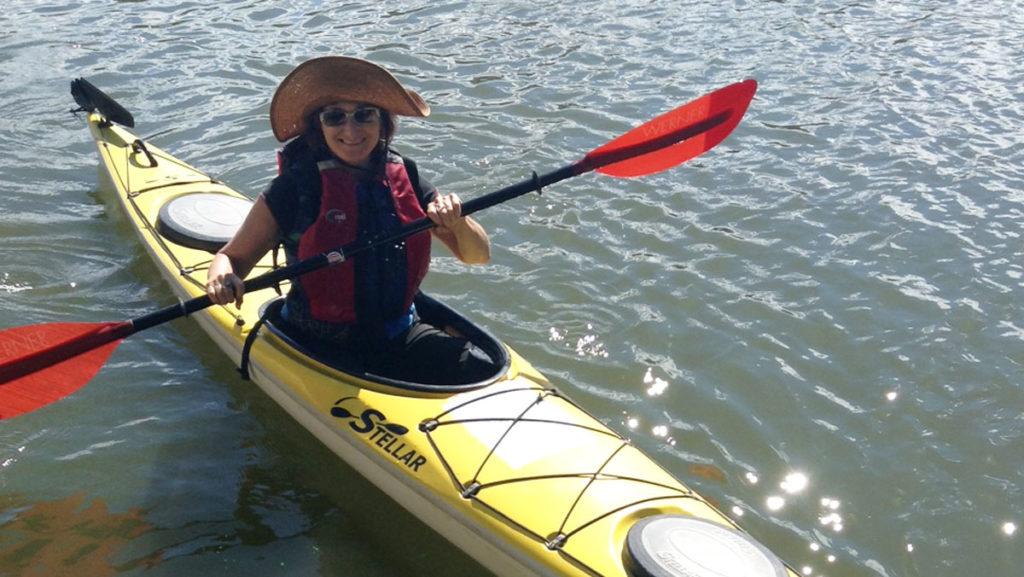When you live in an area considered a temperate rainforest, the last thing you expect is a drought. But here we are in water-abundant Ithaca experiencing the worst recorded drought since monitoring began in 2000. Yes, we’ve had a few inches of rain lately, but it hasn’t brought the creeks and ponds back up to normal levels.
We think conserving water is just for people in California or desert regions. Most of us in the Northeast have been lucky enough to have plenty of water, so we take it for granted. Time to understand that even when we have enough water, wasting it is — a waste!
Imagine this: I give you three big bottles of your favorite beverage, whatever it might be. You drink one bottle and are full, so you throw the other two away. What? You probably wouldn’t do that. You’d save them, put them in a closet or the fridge. But we do it every day with water and think nothing of it. We are fortunate to have faucets. All we do is turn on the tap and there it is — plenty of drinking water.
So how can a drought happen here where we always have so much water? All it takes is a winter with little rain or snow, and a very dry, hot summer. And now that all the IC and Cornell students are back, the number of people using water doubles. Time for a rain dance? If you like, but it’s time to start respecting water and not take it for granted. Every one of us needs to help conserve water.
How? Start by noticing how much water you use every time you turn on a faucet and let it run, or take a shower longer than 5 minutes. Why? Because Ithaca College is by far the largest user of water in the entire Town of Ithaca. (Cornell has its own water supply system.) We get our water from Cayuga Lake. And even when it looks “full,” it may only be because the locks at the north end of the lake have raised the level. We are part of the Great Lakes watershed, and they are now at lower than normal levels too. Sure, you can shower twice a day for 15 min. and not think about the impact. But do you really want to think that your choices don’t make any difference? They do. Strange but true.
We are uphill, so the more water we use, the less water flows down to the creeks that supply the city and replenishes the lake and the underground aquifers. Yes, there is the hydrological cycle with water cycling up into clouds and raining down. But that cycle takes way longer than we think and it is overworked and compromised. So letting the faucet run isn’t meaningless. It matters.
Encourage your family and friends to be smart about water — turn off faucets while washing, shaving, brushing teeth, soaping up in the shower. Wash your clothes with full loads only or adjust the water level down. Water gardens only when essential — grass comes back once it rains, trees have deep roots. Get leaky pipes fixed. And even when it starts raining and snowing again here — okay, sorry to mention snow in September! — keep on conserving water. It matters. And we will all appreciate it. No one wants to turn on a faucet and nothing comes out.
You’ve probably heard of our carbon footprint, but we also have a water footprint. That means all the water that is used to make any object. For example, one cup of coffee uses 37 gallons of water from start to finish in the process — it’s not just the 12 oz. in the cup that counts. A pair of blue jeans uses 2900 gallons — amazing. And a hamburger? A whopper indeed — 634 gallons! Check out your water footprint calculator at environment.nationalgeographic.com
The “good” part of this drought is that it makes us pay attention to water and how we use it — time to respect and appreciate it, and stop taking it for granted. Remember: Just because we have enough doesn’t mean we should waste it. To join the campaign to conserve water, send me an email.
Mara Alper is an Associate Professor in Media Arts, Studies and Sciences. She teaches “Blue Planet,” an interdisciplinary online course about water and “The Power of Water” Ithaca Seminar. Contact her at [email protected]
Water Consumption Graphic Source: http://environment.nationalgeographic.com/environment/freshwater/change-the-course/infographic/
Water Footprint Calculator
http://environment.nationalgeographic.com/environment/freshwater/change-the-course/water-footprint-calculator/














